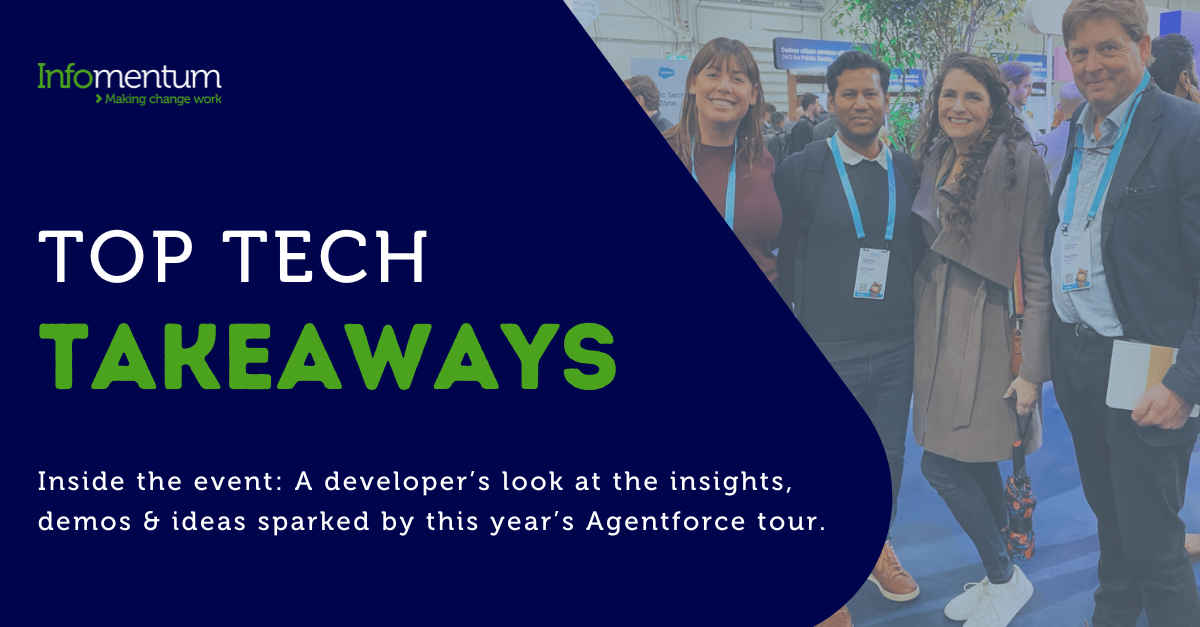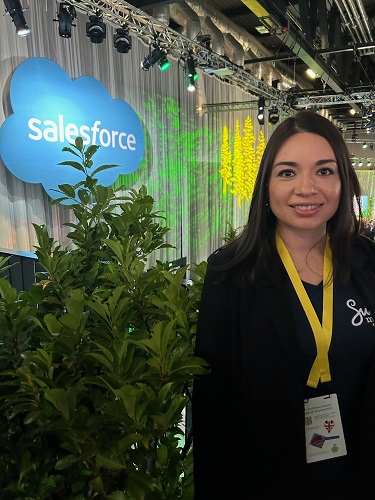Earlier this month, we were proud to join justice leaders, digital partners, and public safety professionals at the Modernising Criminal Justice conference 2025. Hosted at the QEII Centre in London, just a hop, skip, and a jump away from iconic sites such as Big Ben, Westminster Abbey, and the London Eye, the event brought together voices from across the justice system, from arrest through to release.
While the landmarks outside were notable, it was the conversations inside that captured attention, offering a powerful glimpse into the future of a more connected, compassionate justice system.
The ideas shared throughout the day were both inspiring and urgent, highlighting persistent challenges around communication, consistency and public trust. We dive into some of the key issues raised and the practical solutions shaping a more connected, human-centered justice system.
Key theme of the day
At the heart of conversations was a critical question: how can we better support both victims of crime and witnesses in a system that too often leaves them feeling lost, frustrated or unheard? This theme echoed through keynote speeches, panel discussions and networking sessions, creating a shared sense of purpose among everyone in the room.
As a co-sponsor alongside our trusted partner Salesforce, we were proud to be a part of the dialogue. Together, we contributed to a vital conversation around personalised communication – a key ingredient in improving experiences for victims of crime, witnesses and the wider public.
Our experts Andy Doran (Police Strategy and Innovation Director at Salesforce) and Ian Whitehead (Strategic Advisor for Security and Justice at Infomentum) took to the stage to demonstrate how Salesforce technology is helping police forces across the UK better engage with the communities they serve, and how these solutions could support the justice system too.
Three big challenges: failure demand, fragmented journeys and declining trust
To set the scene, Andy and Ian spotlighted three issues that are quietly weakening the justice system: failure demand, fragmented journeys and a deepening loss of public trust. They began by highlighting the cost of not getting things right the first time. In policing, one in five calls to contact centres are not about new incidents, but people chasing updates or trying to understand what happens next.
For a mid-sized Northern force, that translated to one call every two minutes and 36 seconds, equating to the equivalent of 40 full-time staff at an annual cost of around two million pounds. These are not complex investigations or urgent emergencies. They are calls born from silence and uncertainty.
It is clear that this is not just a policing issue - these issues reflect a wider pattern across the justice system where people are left in the dark and often face a confusing and fragmented experience. They may speak to the police, attend court, receive contact from support services, but the journey rarely feels joined up. Communication is inconsistent, updates are missed, and people are left unsure of what is happening or what to expect. The process becomes a series of disconnected steps, rather than one clear path. And that confusion can have serious consequences.
These missed connections are not just operational gaps; they are deeply human ones. And every time someone is left waiting, feels confused or is ignored, trust in the system is eroded just that bit further.
How we're helping: a more human justice experience
Andy and Ian offered a vision for what a better experience could look like - one that responds to people's needs, closes communication gaps, and strengthens trust through more thoughtful, connected support.
Rather than accepting poor communication and inefficiency as unavoidable, they showed how some police forces are already making meaningful change with modern technology and a more empathetic approach. These learnings offer a powerful blueprint for the wider justice system.
Client portals
Self-service portals are another important part of improving communication. These tools give victims of crime and witnesses the ability to check updates, find guidance and understand next steps whenever they need to, without relying on phone calls or repeated follow-ups.
This not only reduces pressure on contact centres, but it also helps people feel more informed and in control of their journey.
Proactive victim engagement
When people are kept in the loop with the latest information, they feel valued and more in control. That is the foundation of a shift toward proactive, personalised updates.
Instead of waiting for victims of crime and witnesses to reach out, forces like Thames Valley and Hampshire are sending timely updates based on the type of crime, risk level, and individual circumstances. This reduces unnecessary contact while helping people feel supported rather than forgotten. People can also self-serve and access additional information they may need through the portals that connect them directly to the person handling their case.
By providing people with the choice of a digitally supported journey, we found that:
-
For those people accessing the service, satisfaction rates have risen significantly to over 90
-
9% of victims have gone on to access further through self-service tools
- And only 1% needed more intensive one-to-one support
By meeting the needs of the majority, organisations can free up time to support those who require more help and ensure that trust is built through consistency and care. Results so far show:
-
Up to 15% fewer 999 calls
-
Up to 20% reduction in non-emergency calls
- Up to 60% increase in satisfaction, especially for serious crimes like burglary and violence
This approach is not about adding complexity. It is about removing friction and focusing on the human experience.
Interoperability
Behind the scenes, disconnected systems are a major reason why the justice experience can feel fragmented and inconsistent. This leads to inefficient and ineffective communication both internally and externally, which creates extra stress for staff. As a result, time delays and additional costs occur, all of which impact our service to the public.
Andy and Ian made the case for integrating and overlaying existing systems instead of starting from scratch. With the right platform, agencies can securely connect the tools they already use, enabling better collaboration and more seamless support across services.
This has been demonstrated in the North West of England, where a collaboration of 6 local police forces have used this approach to securely share information without requiring a full technology overhaul.
Key success factors for connected justice
Creating a connected and compassionate justice experience depends on more than good intentions. It requires a practical and purposeful approach to change.
Our extensive knowledge and experience in policing have taught us:
-
Trust must come first. Reliable and secure handling of sensitive information is the foundation of trust and the baseline for any digital service in the justice sector.
-
Tools must work for real people. Solutions need to be designed for the frontline, not just back-office administration, so they become part of everyday workflows.
- Technology should start small and prove its value. Scalable platforms allow organisations to move quickly, demonstrate impact and grow with confidence.
- Success depends on leadership. Without commitment from senior decision-makers, even the best technology will struggle to drive change.
When these foundations are in place, organisations can move beyond patchwork fixes. They can connect fragmented systems, create smoother journeys, and ensure that victims of crime and citizens are never left behind.
Our partnership
Improving victim communication begins with strong collaboration. Together with Salesforce, we combine top technology with expertise in system integration and digital solutions. We’ve helped UK police forces like Humberside, Thames Valley and Isle of Wight Constabulary to improve victim communication, digitise firearms licensing, and streamline operations - making interactions easier and clearer for the people they serve.
And together, we can support justice organisations with:
-
A secure platform built for the Government
-
Technology that scales and connects seamlessly with existing systems
- Faster delivery of value
- A single, complete view of the citizen
- Lower costs and reduced pressure on internal IT teams
- Tools that improve confidence and trust across services
This is a partnership built on action and impact. Together, we are already supporting justice organisations in transforming their services to be more human, more connected, and more resilient. Many more organisations can benefit from the power of these solutions.
What we took away
The conference highlighted the importance of clear, timely communication and practical technology that fits seamlessly into existing workflows. Most importantly, it reminded us that empathy must remain central - digital tools should support human connections, not replace them. These insights continue to guide our commitment to developing solutions that meet the needs of crime victims, witnesses, and justice professionals alike.
"The event was a great opportunity to connect across the sector and have honest conversations about the challenges we’re all facing. What stood out was the shared drive to do better for both staff and citizens. There’s real momentum building, and it’s exciting to see so many organisations ready to take the next step toward a more connected, human justice experience."
Ian Whitehead, Strategic Advisor for Justice and Security
Wrap up
The event closed on a high note, with inspiring ideas and honest conversations about the future of justice. It was encouraging to see so many people dedicated to creating a more connected and compassionate system.
We share that vision, and are proud to support it through smarter communication, better use of data, and more joined up services. Our focus is on helping organisations take practical steps toward meaningful change.
If you’d like to learn more about the solutions shared or simply want to start a conversation about how we can support your organisation, please don't hesitate to reach out. We’re ready to connect and explore what’s possible together!







